Growing My First Garden: A Novice’s Journey into Gardening can be a cost-effective way to enjoy fresh produce while getting closer to nature. As a first-time gardener, starting with a small space is recommended for easier maintenance and to better understand the time commitment. It’s important to choose vegetables that you love to eat and consider factors such as productivity and successive crops. Selecting the perfect location with plenty of sunlight and convenient water access is crucial for a successful first gardening experience.
Key Takeaways
- Starting small is recommended for first-time gardeners.
- Growing vegetables that you enjoy eating is important for success.
- Choosing the right location with ample sunlight and water access is crucial.
- Planning the layout of your garden through row or intensive cropping is essential.
- Avoiding common mistakes, such as planting in wet soil and not protecting the garden from wildlife, is important.
- Successes in the first gardening season include preparing the soil, changing locations, timing plantings, correct plant spacing, and using vertical gardening and succession planting techniques.
Selecting the Perfect Vegetables for Your First Garden
Starting with a small space and selecting vegetables that you love to eat are important considerations when planning your first garden. As a beginner gardener, it is recommended to start with a small plot or containers if you don’t have yard space. This will help you learn the basics and avoid becoming overwhelmed.
When selecting vegetables, choose ones that you enjoy eating and consider their size, care needs, and productivity. Some easy-to-grow vegetables for beginners include tomatoes, cucumbers, beans, lettuce, and radishes. Additionally, it is important to plant both cool-weather and warm-weather vegetables to enjoy a continuous harvest throughout the seasons.
When choosing a spot for your garden, look for an area that receives at least 6-8 hours of direct sunlight per day and is easily accessible to water. Whether you use row cropping or intensive cropping methods, make sure to plan your garden layout beforehand. This will help you make the most of your space and ensure your plants have enough room to grow.
Starting your plants in rich soil is crucial for their success. Avoid common mistakes such as planting in wet soil, starting seeds on a windowsill, and not protecting the garden from wildlife. Be sure to remove diseased plants to prevent the spread of disease.
On the other hand, some successes for first-time gardeners include preparing the soil for specific plants like blueberries, changing the garden location to optimize conditions, timing plantings based on your climate, correctly spacing plants, growing a vertical garden, and using succession planting for a year-round harvest.
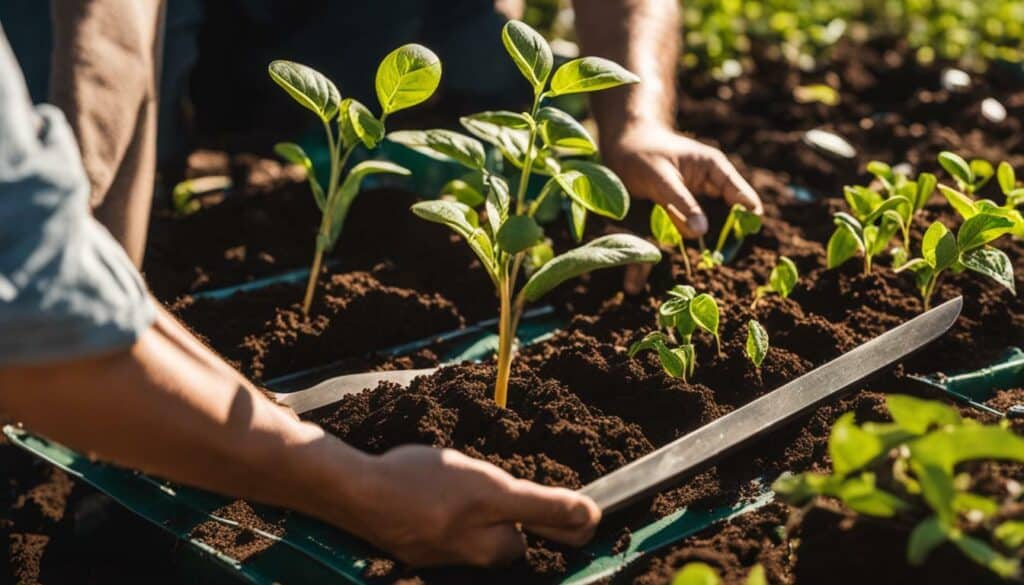
Finding the Ideal Spot for Your Garden
When starting your first garden, it is crucial to choose a spot with ample sunlight and convenient water access for your plants to thrive. It is recommended to start with a small space, such as a 6×6 feet area, especially for beginners. This allows them to learn the basics of gardening and understand their time commitment. Growing vegetables in containers is also a viable option for those without yards.
When deciding what to plant, it’s important to consider the vegetables you and your family enjoy eating. Pay attention to the characteristics of each vegetable variety, such as size and care needs. Additionally, think about how much you will consume and whether you can preserve or give away excess produce. Planting both cool- and warm-weather vegetables enables a continuous harvest throughout the seasons.
The spot for your garden should have ample sunlight, with at least 6-8 hours of direct sunlight a day for sun-loving vegetables. Partially shaded areas can be utilized for vegetables and herbs that tolerate those conditions. It is also essential to have convenient access to water, preferably close to a water source. Frequent watering is necessary in the early stages, but it’s advisable to give the garden a long drink every few days after establishment. Installing soaker hoses or drip irrigation systems can help minimize water waste.
There are two layout options for vegetable gardens: row cropping and intensive cropping. Row cropping involves planting in single file rows with footpaths in between, while intensive cropping maximizes space by planting plants close together in a wide row. The square-foot method, which divides a raised bed into 1-foot squares, is a specialized version of intensive cropping.
Avoid common mistakes in gardening, such as planting in wet soil, starting seeds on a windowsill, not protecting the garden from wildlife, and planting unsuitable perennial herbs in an annual garden bed. It’s crucial to remove diseased plants to prevent the spread of disease and to avoid overhead watering, as it can contribute to plant diseases.
On the other hand, there are several successes to celebrate in the first season of gardening. Preparing the soil for blueberry plants by testing pH levels and adding organic matter contributes to a successful harvest. Changing the garden location to a higher area with better drainage can improve crop yield. Timing plantings according to the climate and understanding the proper spacing for each plant are key factors in a successful garden. Lastly, growing a vertical garden and using succession planting techniques allow for year-round harvests.
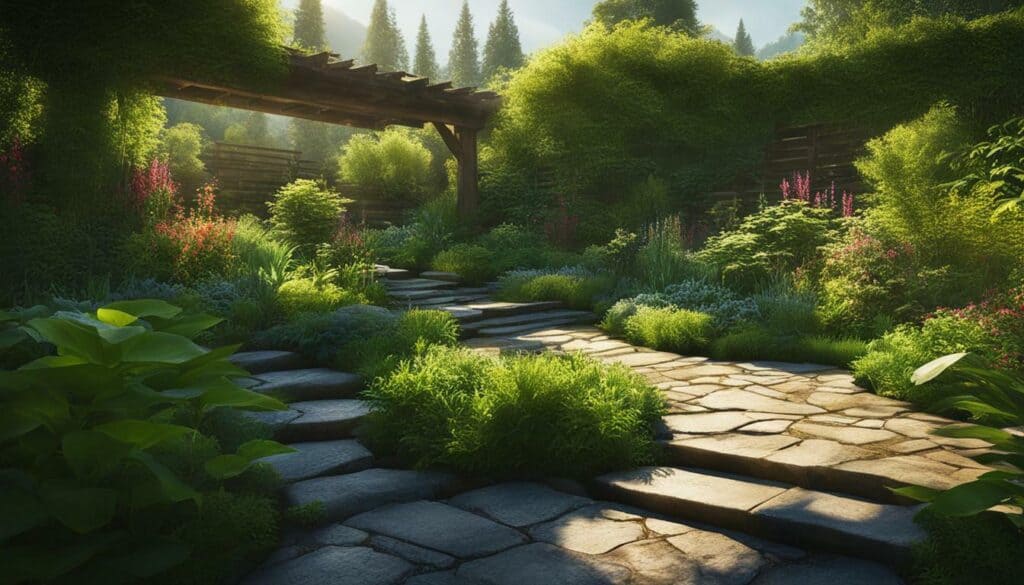
By following these tips and avoiding common mistakes, beginner gardeners can find the ideal spot for their garden and enjoy a bountiful harvest.
Planning the Layout of Your Garden
Planning the layout of your garden, whether through row cropping or intensive cropping, is essential for maximizing space and ensuring successful growth. As a beginner gardener, it’s best to start small with a 6×6 feet garden or consider growing vegetables in containers to learn the basics before investing more time and money.
When choosing what to grow, always start with vegetables that you enjoy eating. Think about how much you and your family will eat and choose the right size and care needs for each variety. Additionally, consider planting both cool and warm-weather vegetables for continuous harvest throughout the seasons.
To ensure the best growth for your vegetables, choose a spot with lots of sunlight. Most vegetables require at least 6 to 8 hours of direct sunlight a day, so avoid planting them in shady areas. If your yard provides partial shade, planting vegetables and herbs that tolerate those conditions or opting for container gardening on a sunny deck or balcony is the way to go.
There are two main approaches to consider when planning the layout of your garden: row cropping and intensive cropping. Row cropping involves planting single-file rows with enough space to walk between them, making it easier to use mechanical equipment for weed control. Intensive cropping involves spacing plants close together in a wide row, maximizing space utilization. Consider using a square-foot method for a specialized version of intensive cropping.
Lastly, start plants in rich soil to guarantee a successful harvest. Amend the soil with organic matter and test the pH levels if needed. Rich soil will provide essential nutrients for your plants to grow and thrive.

By following these tips, you can effectively plan the layout of your garden and create a space that is productive and enjoyable. With careful planning and proper care, you can have a bountiful garden that provides you with fresh produce throughout the season.
Mistakes to Avoid in Your First Garden
As a beginner gardener, there are certain mistakes you should be aware of and avoid in order to have a successful first garden. Here are some tips to help you avoid the most common mistakes:
- Start with a small space: Starting with a small garden will help you learn the basics and manage your time and resources effectively. A 6×6 feet area is a good size for beginners, and container gardening is also a great option.
- Grow what you love to eat: Choose vegetables that you enjoy eating and pay attention to the variety. Consider factors such as size, disease resistance, and productivity when selecting what to grow in your garden.
- Choose the spot for your garden wisely: Ensure that your garden receives at least 6 to 8 hours of direct sunlight a day. If your yard provides partial shade, you can grow vegetables and herbs that tolerate those conditions. Also, consider convenient access to water for regular irrigation.
- Plan your vegetable garden layout: Decide whether you want to opt for row cropping or intensive cropping. Row cropping is suitable for large gardens and makes it easier to use mechanical equipment. Intensive cropping involves planting plants close together and utilizing almost every square inch of prepared soil.
- Start plants in rich soil: Ensure that you prepare your soil well before planting. Conduct a soil test, amend the soil with organic matter, and provide the necessary nutrients for healthy plant growth.
However, there are also some common mistakes that you should avoid:
- Planting in wet soil: Planting in wet soil can lead to soil compaction, which makes it harder for roots to grow and take up nutrients.
- Starting seeds on a windowsill: Starting seeds on a windowsill may seem like a good idea, but without adequate light, the seedlings will become weak and leggy.
- Not protecting the garden from wildlife: Wildlife such as deer and rabbits love to eat vegetables, so make sure to protect your garden with fencing or other barriers.
- Planting the wrong type of onions: Onions come in both long-day and short-day varieties. Make sure to select the right type for your climate.
- Mixing perennial herbs with annual crops: Perennial herbs like oregano and thyme can take over the garden and compete with your annual crops.
- Not removing diseased plants: If you notice any plants with diseases, remove them immediately to prevent the spread of the disease to other plants.
- Resorting to overhead watering: Overhead watering can lead to diseases and waste water. Instead, use drip irrigation or a soaker hose to deliver water directly to the roots.
By avoiding these mistakes and incorporating successful practices such as preparing the soil for blueberry plants, changing the garden location if necessary, timing plantings according to the climate, ensuring correct plant spacing, growing vertically, and practicing succession planting, beginners can have a more successful gardening experience.

Key Successes in My First Garden
Despite the challenges, there were several key successes I achieved in my first garden that I would love to share with fellow beginner gardeners. Starting with a small space was intimidating at first, but it forced me to be deliberate in my plant choices and layout planning.
I learned that growing what you love to eat is crucial when starting out. I focused on tomatoes, peppers, and cucumbers, which were all easy to grow and maintain. Choosing the right spot for your garden is also vital. My garden needed ample sunlight, so I chose a location that received at least six hours of direct sunlight per day. Convenient access to water was also a must, so I placed my garden near a water source.
Planning the layout effectively was another key success. I explored different options, such as row cropping and intensive cropping, and considered the spacing requirements for each plant. I even used a garden planner app to help me visualize the layout before planting.
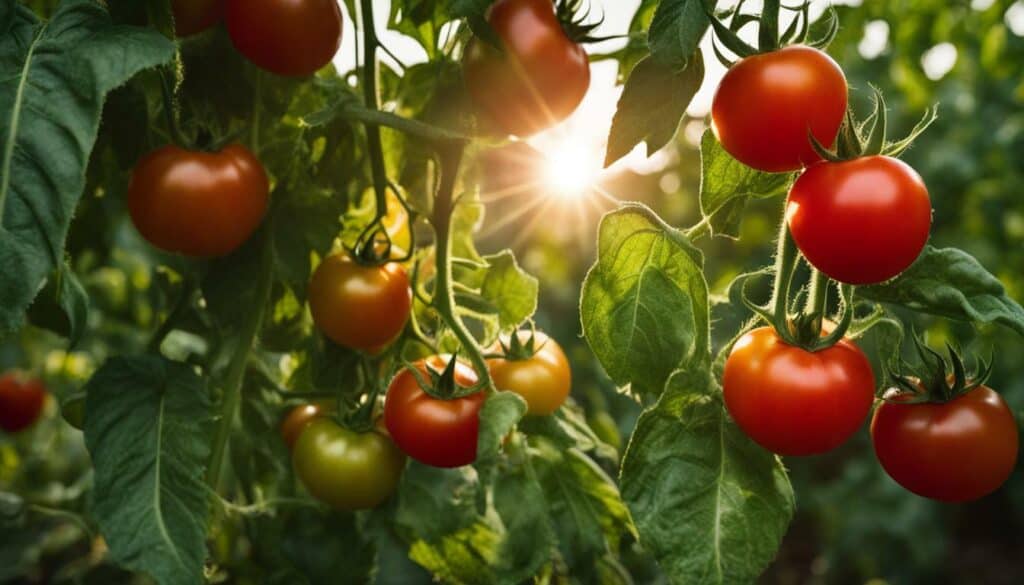
Starting plants in rich soil was also critical. I prepared the soil for my blueberry plants with acidic compost and mulched around the plants to help retain moisture. Changing the garden location for better drainage was another success. Once I realized the original location was too damp, I moved my garden to a sunnier spot with better drainage.
Timing plantings according to the local climate and ensuring correct plant spacing were essential to my garden’s success. I learned the hard way that proper plant spacing is crucial to prevent disease and allow for air circulation. Growing a vertical garden and using succession planting allowed me to maximize space and increase my harvests year-round.
Jill McSheehy, a gardening expert and host of the Beginner’s Garden Podcast, shared some of these successes. She emphasized the importance of starting small and growing what you love to eat and offered guidance on selecting the right spot for your garden, planning the layout, and timing plantings for the local climate.
Exploring Vertical Gardening and Succession Planting
In my journey of growing my first garden, I discovered the advantages of vertical gardening and succession planting for maximizing yields and enjoying a variety of crops. Vertical gardening involves growing plants vertically on trellises, fences, or other support structures, allowing you to make the most of limited space. This technique is especially beneficial for those with smaller gardens or even just a balcony or deck.
Vertical gardening offers several advantages. It maximizes the use of available space, allowing you to grow more plants in a smaller area. It also improves air circulation and exposure to sunlight, reducing the risk of disease and promoting optimal plant growth. Furthermore, vertical gardening can help protect your crops from pests and provide better visibility and access to the plants for maintenance and harvesting.
There are various types of plants that can be grown vertically, including vining crops like beans, cucumbers, and peas. These plants can be trained to grow upwards using trellises or stakes. Additionally, many flowering plants and herbs can also be grown vertically, adding aesthetic appeal to your garden.
Succession planting is another technique that can be combined with vertical gardening to enhance productivity. It involves planting different crops at different times, allowing for a continuous harvest throughout the growing season. By staggering planting dates, you can ensure a steady supply of fresh produce rather than an overwhelming harvest all at once.
When planning your vegetable garden, start with a small space, especially if you’re a beginner. This will help you learn the basics and prevent overwhelming yourself with a larger plot. Consider growing vegetables that you enjoy eating to make the most of your garden’s produce. Pay attention to the description on seed packets or labels to choose varieties that suit your space and climate.
Choosing an appropriate location for your garden is crucial. Most vegetables require full sun, at least 6 to 8 hours of direct sunlight a day. If your garden receives partial shade, opt for vegetables that can tolerate those conditions, such as lettuce and spinach. Ensure convenient water access by placing your garden close to a water source, or consider installing soaker hoses or drip irrigation for efficient watering.
In terms of layout, you can choose between row cropping and intensive cropping. Row cropping involves planting in rows with ample space between plants for easy access and mechanical maintenance. Intensive cropping, on the other hand, involves planting closely together to maximize space utilization. You can even use the square-foot method, dividing a raised bed into 1-foot squares and planting specific numbers of plants in each square.
Preparing the soil is crucial for a successful garden. Test the soil’s pH and amend it if necessary to ensure proper nutrient uptake by the plants. Succession planting can also benefit from proper timing, as different crops have different growing seasons. Lastly, vertical gardening can be a great way to utilize vertical space and increase your garden’s productivity.
By incorporating vertical gardening and succession planting techniques, you can make the most of your garden space and enjoy a continuous harvest throughout the growing season. It’s an excellent way to explore gardening in a smaller area and maximize your vegetable production.
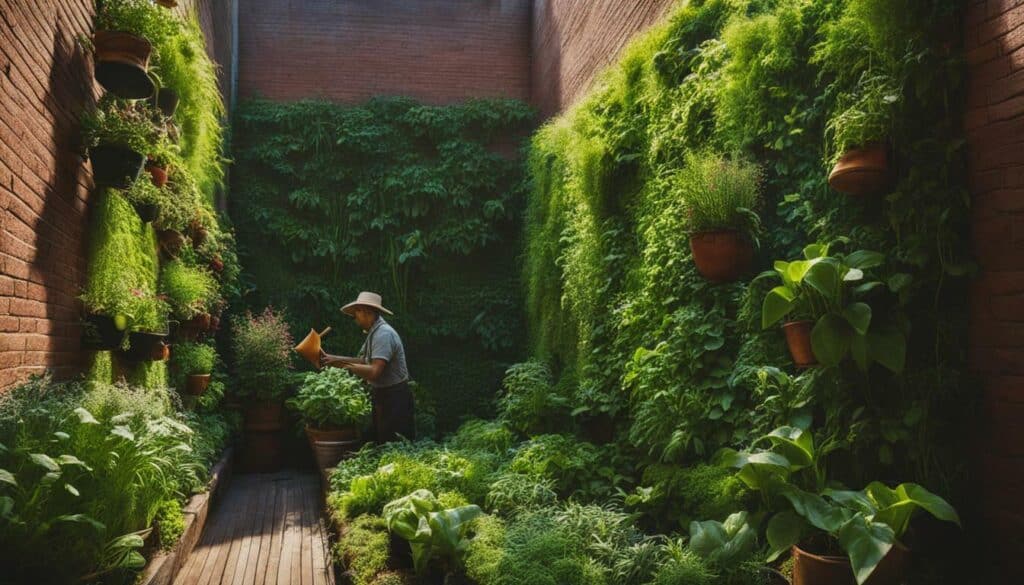
Conclusion
Embarking on my first gardening journey has been an incredible experience, and I encourage all beginner gardeners to take the leap and start their own garden. Vegetable gardening at home can provide you with fresh produce, a deeper connection with nature, and a sense of accomplishment.
When starting a garden, it is important to first select vegetables that you enjoy eating and to choose a spot with ample sunlight and easy access to water. Planning your garden layout, whether through row cropping or intensive cropping, can also help maximize productivity.
One key to a successful garden is starting with rich soil and learning from both mistakes and successes throughout the growing season. Don’t be afraid to try new techniques, and always keep your garden’s successes in mind.
With proper planning and care, a vegetable garden can provide a bountiful harvest that brings joy and satisfaction to those who tend to it. So don’t hesitate to dive in and start your own garden today!
FAQ
Q: Is gardening expensive?
A: Growing your own garden can actually be a cost-effective way to enjoy fresh produce.
Q: What vegetables should I choose for my first garden?
A: It’s important to select vegetables that you love to eat and are suitable for your climate.
Q: Where should I place my garden?
A: Choose a spot with ample sunlight and easy access to water for your garden.
Q: How should I plan the layout of my garden?
A: Consider options like row cropping or intensive cropping to optimize the space in your garden.
Q: What mistakes should I avoid in my first garden?
A: Some common mistakes include planting in wet soil, starting seeds on a window sill, not protecting the garden from wildlife, and planting the wrong type of onions.
Q: What are some successes I can expect in my first garden?
A: Successes may include preparing the soil for blueberry plants, changing the garden location for better results, timing plantings for the local climate, and proper plant spacing.
Q: What are the benefits of vertical gardening and succession planting?
A: Vertical gardening and succession planting can help maximize space and increase your harvest in a first garden.
Can I Use the Container Gardening Method to Start My First Garden?
Container gardening is a fantastic option for beginners looking to start their first garden. Not only is it an easy way to nurture plants, but it also allows you to utilize limited space efficiently. If you’re eager to grow basil in containers, rest assured that this method is excellent for cultivating this aromatic herb.
Source Links
- https://www.bhg.com/gardening/vegetable/vegetables/planning-your-first-vegetable-garden/
- https://journeywithjill.net/gardening/2019/09/02/my-first-garden-mistakes-and-successes/
- https://www.amazon.com/Vegetable-Gardening-Beginners-Growing-Vegetables/dp/1646115376
- https://www.amazon.com/First-time-Gardener-Vegetables-encouragement-First-Time/dp/0760368724
- https://www.amazon.com/Your-First-Vegetable-Garden-Starting/dp/1739779355
- https://www.almanac.com/vegetable-gardening-for-beginners
- https://gardenerspath.com/how-to/beginners/first-vegetable-garden/
- https://www.gardensthatmatter.com/choose-garden-location/
- https://www.almanac.com/where-put-vegetable-garden
- https://www.bhg.com/gardening/yard/garden-care/ten-steps-to-beginning-a-garden/
- https://www.almanac.com/video/how-lay-out-vegetable-garden
- https://growagoodlife.com/vegetable-garden-map-garden-beds/
- https://www.growveg.com/guides/plan-your-first-vegetable-garden-in-5-easy-steps/
- https://www.washingtonpost.com/home/2023/06/08/avoid-common-gardening-mistakes/
- https://thefreerangelife.com/gardening-mistakes/
- https://www.architecturaldigest.com/story/gardening-mistakes-to-avoid
- https://extension.umn.edu/yard-and-garden-news/succession-planting
- https://www.themeateater.com/wild-and-whole/gardening/how-vertical-gardening-helps-you-grow-more-food
- https://www.skynursery.com/2022/04/07/the-dance-of-the-veggies-p1-succession-planting/
- https://www.ipl.org/essay/My-Experience-Of-Gardening-My-First-Garden-PKCXA8HESCPR
- https://rodaleinstitute.org/myfirstgarden/
- https://www.preciouscore.com/7-life-lessons-i-have-learned-from-my-first-garden/

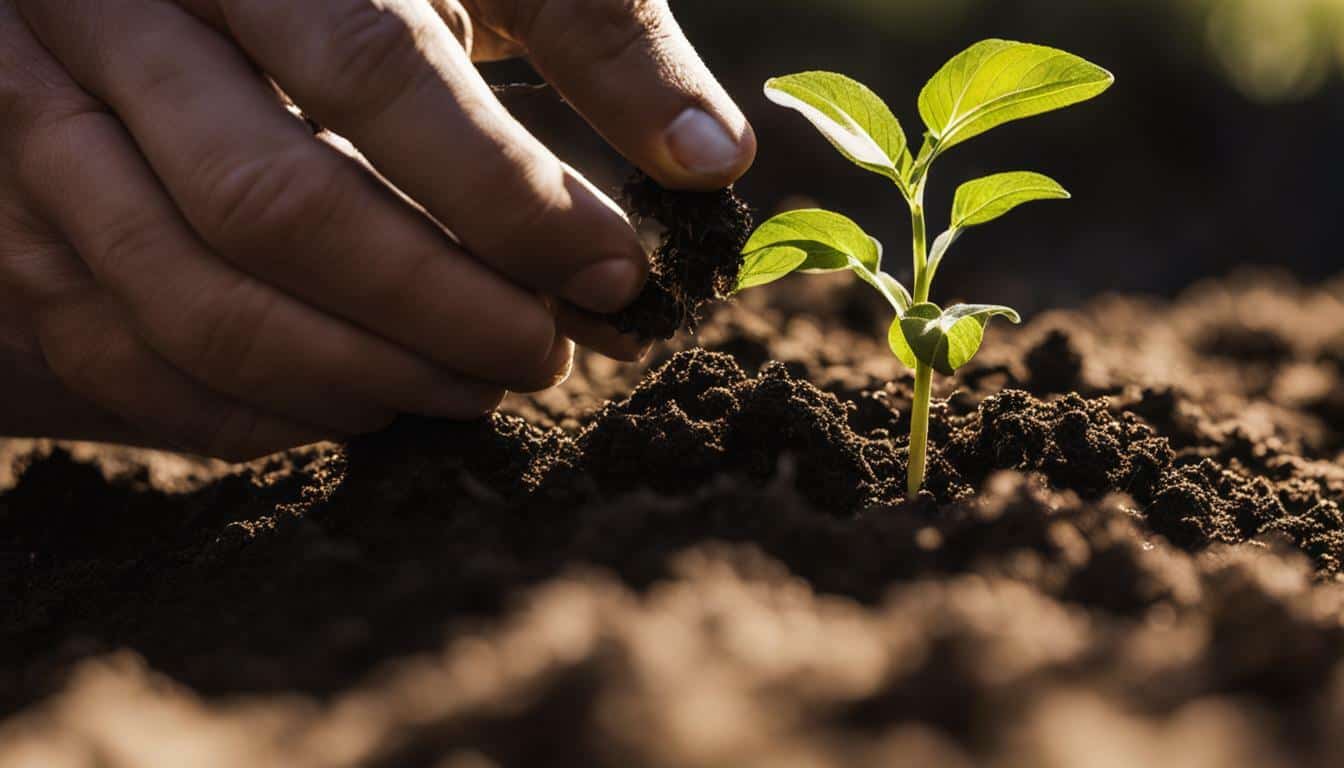



Leave a Reply